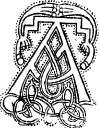The Ceiles and the Land Laws

TUATH, cinel, or clan occupied a given district, delimited by natural boundaries, as mountains and rivers, or by arbitrary boundaries first determined by the fortunes of war or otherwise. This whole district belonged, originally and ultimately, to the clan, as a corporation or community, and it was divided in the following manner for the benefit of that community:—Part was allotted to the king or chieftain, part to the flaiths and other public officers, part to the céiles or free clansmen, for their respective homesteads, part called the Cumhal Senorba was placed under the control of the king or chieftain for the maintenance of the poor, old, and incapable members of the clan, and part called the Fearan Fine, or tribe's quarter, was retained as the common land of the whole clan, which every member of the clan was free and equally entitled, sub modo, to use. None of this last was held as private property, except for one year, at the end of which it would become common again. There was also a portion of land, the extent of which was diminishing with the progress of ages, which occupied an intermediate position between the private land and the common land in this, that, on the death of a holder, all the land of this class held by his sept was divided anew. The land, as regards quality, generally ranged in the order set out, beginning with the king's best, which was usually that longest in cultivation, and ending with the common waste. The land held in common, however, was not all bad land or waste; some of it was cultivated and some meadowed. Land holders may be divided into three general classes, namely; first, all who held land officially, including the king, the professional men, and the flaiths; second, the Céiles, or ordinary free clansmen, who held land (as one may say) by birthright, who were the bone and muscle of the community, paid fixed tributes for the maintenance of the state, and formed its army in time of war; third, the non-free people, some of whom held land under contracts.
It is said by one recent writer that the céiles were freemen who placed themselves under the protection of a flaith; and another likens them to the Roman Clientes, which is substantially the same thing. I believe this to be a direct inversion of what they were. They were the ordinary free clansmen, who, as such, held land by as good a title as then existed, by as good a title as that of the flaith himself. Their rights, to their proper extent, originated in the law like his, and were as fully secured by the law as his. Instead of placing themselves under the protection of a flaith in the sense suggested, they placed, or at all events had the right to place, a flaith of their own choosing and of their own kindred over them to represent them and act for them as occasion required, and to protect, not appropriate, their rights. The two views may practically amount to the same thing if the period viewed is that of the clan's decay; but one is offensive and repugnant to an efficient clan system, while the other harmonises with that system and is not offensive.
